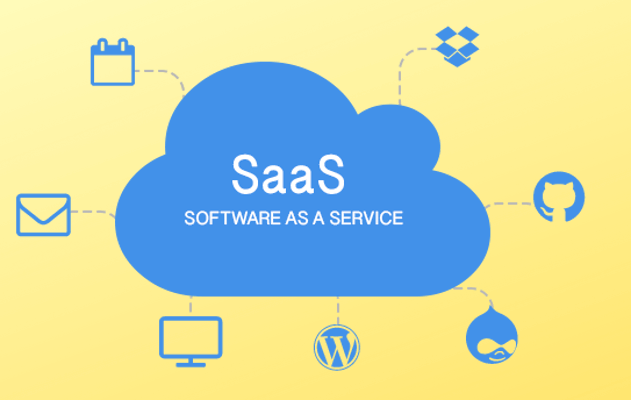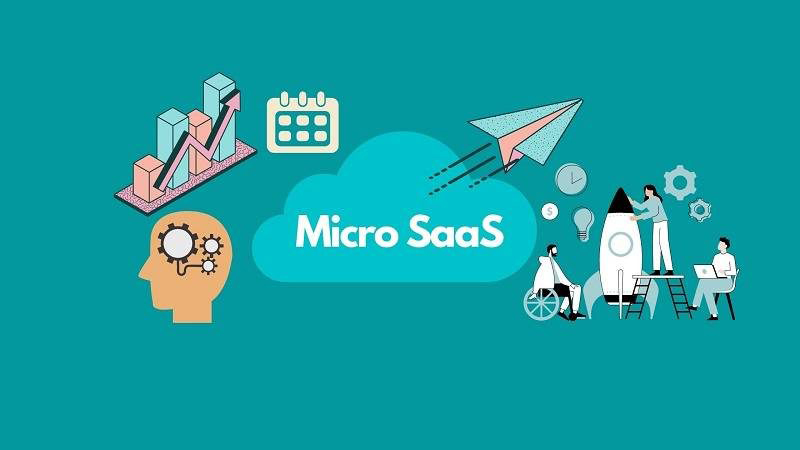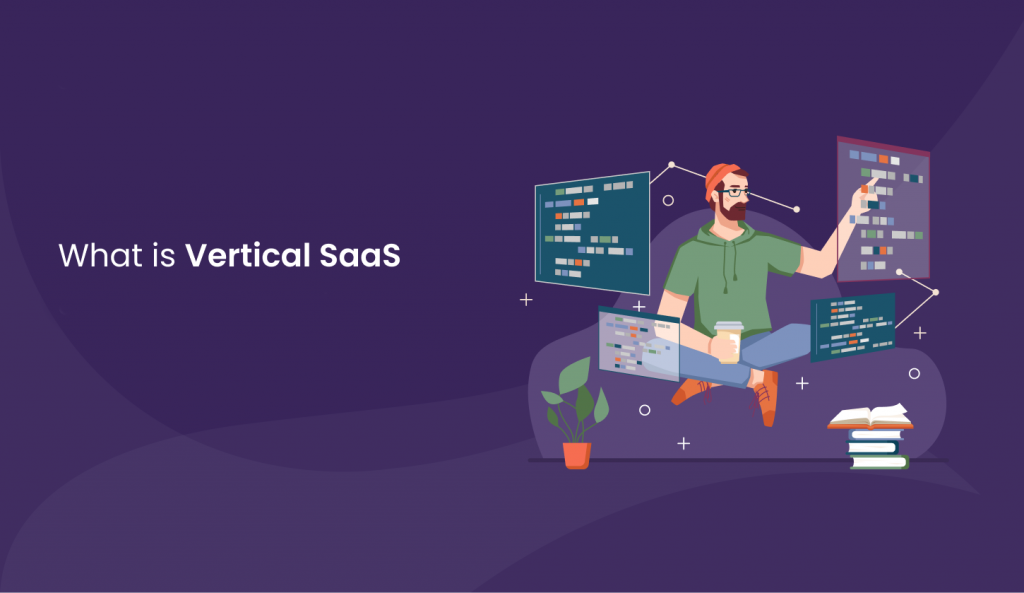In today’s fast-paced business landscape, Software as a Service (SaaS) has become a game-changer, revolutionizing the way businesses access and utilize software applications. Within the realm of SaaS, there are specialized solutions that cater to specific market segments, namely Micro SaaS and Vertical SaaS. Understanding the difference between these two approaches (Micro SaaS vs Vertical SaaS)is crucial for entrepreneurs and businesses looking to leverage SaaS solutions effectively.
In this article, we will explore the key differences between Micro SaaS and Vertical SaaS, providing valuable insights into their unique characteristics and benefits.
Before delving into the specifics of Micro SaaS vs Vertical SaaS, let’s briefly establish a foundational understanding of SaaS itself.
What Is SaaS?
SaaS refers to the delivery model where software applications are provided as a service over the Internet, eliminating the need for businesses to install and maintain software on their own infrastructure. With SaaS, users can access applications through web browsers, enjoying the benefits of scalability, cost-effectiveness, and simplified maintenance. The two main varieties of SaaS are horizontal SaaS and vertical SaaS.

What Is Micro SaaS?
Micro SaaS, also known as Micro Software as a Service, refers to a specific type of software business that focuses on providing niche or specialized solutions to a targeted audience. It involves developing and offering small-scale, highly focused software applications to cater to the specific needs of a particular market segment.
Benefits Of Micro SaaS:
Here are the top 5 benefits of Micro SaaS that help you in your business.
1. Agility and Flexibility:
- Faster decision-making and execution due to smaller team size.
- Ability to adapt and pivot quickly based on user feedback and market demands.
- Easier implementation of new features and updates without complex processes.
2. Lower Costs and Risks:
- Reduced overhead costs as Micro SaaS typically operates with a lean infrastructure.
- Minimal financial risks as it requires less capital investment compared to traditional SaaS models.
- Smaller scale allows for more experimentation and learning at a lower cost.
3. Niche Targeting and Specialization:
- Micro SaaS products focus on addressing specific pain points or serving niche markets.
- Better understanding of the target audience, leading to higher customer satisfaction.
- Opportunity to dominate a specific market segment and establish a strong brand presence.
4. Increased Customer Engagement:
- Direct interaction with customers allows for personalized support and better relationship building.
- Enhanced responsiveness to customer needs and quicker problem resolution.
- Valuable customer feedback can drive product improvements and feature prioritization.
5. Rapid Time-to-Market:
- Smaller scope and simplified development process enable faster product development cycles.
- Quicker deployment and launch due to reduced complexity and dependencies.
- Competitive advantage in capturing early adopters and staying ahead of larger competitors.
These benefits highlight the advantages of Micro SaaS, making it an attractive option for entrepreneurs and small teams looking to create and deliver specialized SaaS solutions in a fast-paced and dynamic market.

Examples of Micro SaaS
To better understand the concept of Micro SaaS, let’s explore a few successful examples across different industries.
- Task Management for Remote Design Teams: A Micro SaaS solution catering specifically to remote design teams, offering a task management platform tailored to the unique collaboration challenges faced by designers working remotely. This specialized software enables seamless communication, file sharing, and project tracking, enhancing productivity and streamlining workflows for design teams.
- HR Compliance Automation for Healthcare Providers: This Micro SaaS offering focuses on automating HR compliance processes specifically for healthcare providers. The software ensures adherence to industry-specific regulations, simplifies employee onboarding, and tracks compliance requirements, reducing administrative burdens for healthcare organizations.
By targeting specific niches with tailored software solutions, these Micro SaaS providers address industry-specific pain points more effectively than generic SaaS providers, delivering substantial value to their customers.
To know how to build a Profitable Micro-SaaS Business Click Here.
What Is Vertical SaaS?
Vertical SaaS refers to software as a service (SaaS) solutions that are specifically designed to cater to the needs of a particular industry or vertical market. Instead of providing a generic solution for multiple industries, Vertical SaaS focuses on delivering industry-specific functionality and features.
Here are five benefits of Vertical SaaS:

1. Industry Expertise:
- Deep understanding of the unique challenges, workflows, and requirements of a specific industry.
- Ability to offer specialized features and functionalities that address industry-specific pain points.
- Industry expertise enhances customer trust and credibility, positioning the software as a tailored solution.
2. Enhanced Efficiency:
- Streamlined processes and workflows designed specifically for the targeted industry.
- Elimination of unnecessary features or functionalities that are irrelevant to the industry.
- Increased productivity and time savings due to industry-specific automation and integration capabilities.
3. Customization and Scalability:
- Vertical SaaS allows for customization options that cater to the specific needs of different businesses within the industry.
- Scalable solutions that can accommodate the growth and evolving requirements of the industry.
- Flexibility to adapt to changing regulations, compliance standards, and industry trends.
4. Improved Customer Experience:
- Vertical SaaS provides industry-specific terminology, workflows, and user interfaces, resulting in a more intuitive user experience.
- Faster onboarding and training processes as the software aligns with the industry’s existing practices.
- Dedicated customer support and specialized knowledge base for industry-specific queries and challenges.
Competitive Advantage:
- Reduced competition compared to generic SaaS solutions, as vertical markets often have fewer players.
- Ability to establish a dominant position within a specific industry and build a strong brand reputation.
- Higher customer retention rates due to the industry-specific value provided, resulting in long-term customer relationships.
These benefits illustrate the value proposition of Vertical SaaS, enabling businesses to leverage industry-specific expertise, streamline processes, and deliver tailored solutions that address the unique requirements of a particular vertical market.
Examples of Vertical SaaS
To illustrate the concept of Vertical SaaS further, let’s examine a few successful examples across different industries.
- Real Estate Management Software: This Vertical SaaS solution provides comprehensive software for real estate professionals, offering features such as property listings, tenant management, financial reporting, and lease management. By catering specifically to the real estate industry, this software ensures that real estate businesses can efficiently manage their properties, streamline tenant interactions, and optimize their financial operations.
- Hospitality Management System: This Vertical SaaS solution targets the hospitality industry, providing a suite of software tools that encompass hotel operations, reservations, guest management, and revenue optimization. By focusing on the unique requirements of the hospitality sector, this software enables hoteliers to enhance guest experiences, optimize room occupancy, and maximize revenue streams.
By aligning software functionality with industry-specific needs, Vertical SaaS providers empower businesses to thrive within their respective sectors.
Key Differences – Micro SaaS vs Vertical SaaS
While both Micro SaaS and Vertical SaaS cater to specialized markets, there are fundamental differences that set them apart. Understanding these differences is crucial for businesses considering SaaS solutions to ensure they select the most suitable approach for their needs.
- Target Audience: Micro SaaS targets specific niche markets within broader industries, catering to customers with highly specialized needs. On the other hand, Vertical SaaS focuses on entire industries or verticals, serving a broader customer base within those sectors.
- Market Focus: Micro SaaS providers prioritize depth over breadth, focusing on serving a small segment of customers with highly tailored solutions. In contrast, Vertical SaaS providers aim for breadth, targeting entire industries and offering software solutions that encompass a wider range of functionalities.
- Customization: Micro SaaS excels in delivering customizable software solutions due to its narrow focus on niche markets. Vertical SaaS, while still customizable to some extent, may have limitations in customization compared to Micro SaaS offerings, given their broader market scope.
- Scope of Functionality: Micro SaaS solutions tend to be highly specialized, offering a narrower set of features that address specific pain points within niche markets. Vertical SaaS solutions, being industry-focused, typically provide a broader range of functionalities that cater to the overall needs of businesses within specific industries.
By carefully considering these differences, businesses can make informed decisions about whether to pursue a Micro SaaS or Vertical SaaS approach based on their target market, customization requirements, and the scope of functionality needed.
Choosing the Right SaaS Approach
Selecting the most suitable SaaS approach for a business involves a thoughtful analysis of various factors. To make an informed decision, entrepreneurs and businesses should consider the following:
- Target Market Size: Assess the size and potential of the target market. If the market is relatively small and specialized, Micro SaaS might be a better fit to serve the unique needs of customers within that niche.
- Competition: Evaluate the level of competition within the target market. If the market is highly competitive and saturated with generic SaaS providers, Micro SaaS might offer a competitive advantage by catering to specific customer pain points that are overlooked by broader solutions.
- Customization Requirements: Determine the level of customization needed for the software solution. If the business requires highly tailored software to meet specific customer needs, Micro SaaS can offer the flexibility and customization capabilities necessary.
- Industry-Specific Requirements: Consider the industry-specific requirements and workflows. If the business operates within an industry with unique operational needs, Vertical SaaS can provide specialized tools and functionalities designed specifically for that industry.
- Integration Capabilities: Evaluate the integration capabilities required for the business. If seamless integration with existing systems, APIs, or third-party tools is crucial, it is important to assess whether Micro SaaS or Vertical SaaS can meet those integration needs effectively.
- Resource Availability: Consider the resources available within the business, including the size of the team, budget, and technical expertise. Micro SaaS may be a more suitable option if the business has limited resources and wants to start small, whereas Vertical SaaS may require more resources for industry-specific development and support.
By thoroughly researching the target market, competition landscape, customization needs, and industry-specific requirements, businesses can choose the most suitable SaaS approach that aligns with their goals and maximizes their chances of success.
Conclusion – Micro SaaS vs Vertical SaaS
Micro SaaS and Vertical SaaS represent two distinct approaches within the realm of specialized SaaS solutions. While Micro SaaS caters to narrow niche markets with highly customizable software, Vertical SaaS targets entire industries with industry-specific functionality and expertise. By understanding the differences between these approaches, businesses can make informed decisions about which path to pursue based on their target market, customization needs, and industry-specific requirements.
Regardless of the chosen approach, both Micro SaaS and Vertical SaaS offer immense value to businesses by providing tailored software solutions that address specific pain points within niche markets or industries. By leveraging the benefits of specialized SaaS solutions, businesses can streamline operations, enhance productivity, and gain a competitive edge in their respective markets. So whether you’re a startup looking to disrupt a niche market or an established enterprise aiming to optimize industry-specific workflows, exploring the world of Micro SaaS and Vertical SaaS can open up new avenues of success.
FAQs – Micro SaaS vs Vertical SaaS
Micro SaaS focuses on providing specialized, narrow solutions to a specific niche market, while SaaS refers to the broader model of delivering software applications as a service over the internet. Micro SaaS operates on a smaller scale with a narrower product scope, targeting specific pain points within a niche customer segment. In contrast, SaaS encompasses a wide range of software applications that cater to a broader audience across different industries.
The two main varieties of SaaS are horizontal SaaS and vertical SaaS.
1. Horizontal SaaS: Horizontal SaaS refers to software applications that are designed to serve a wide range of industries or business functions. They offer broad functionality and are typically not specific to any particular industry. Examples include project management tools, customer relationship management (CRM) systems, or email marketing platforms.
2. Vertical SaaS: Vertical SaaS, also known as industry-specific SaaS, caters to the unique needs of a specific industry or vertical. These solutions are tailored to address the specific requirements, regulations, and workflows of a particular industry. Examples include property management software, healthcare practice management systems, or restaurant management platforms.

